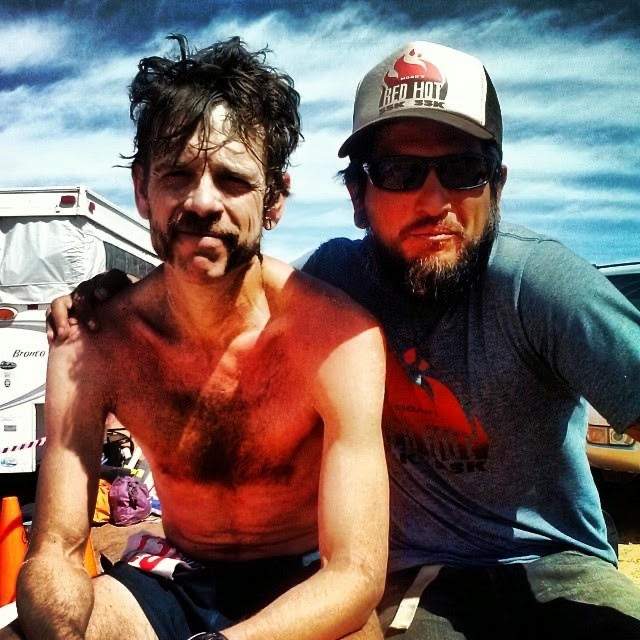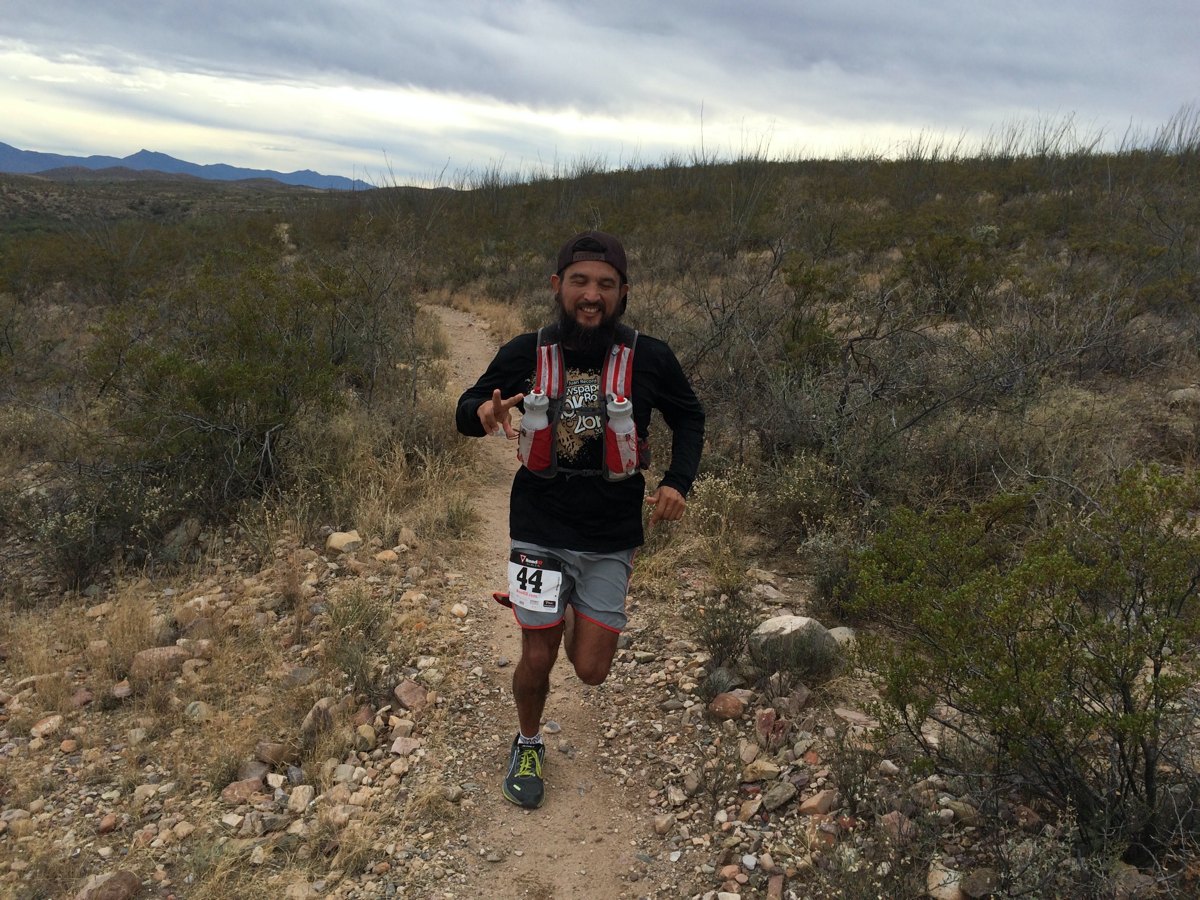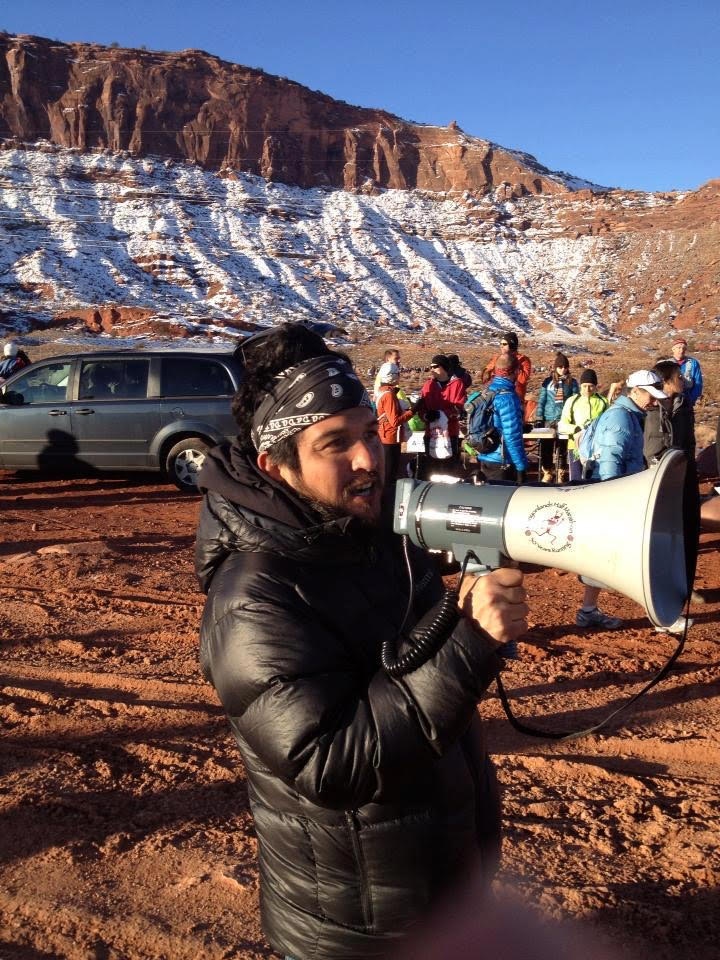[Author’s Note: In the late 1990s and early 2000s, I wrote a column for UltraRunning Magazine called “Twenty-Something” that profiled up and comers in our sport. In a November of 2001 column titled “Chris Martinez: Running for the People,” I discussed my young, newfound friend’s background, goals, and passion for the sport of trail running. Finding myself, less than 20 years later, writing a piece in his remembrance tears me up inside.]
The phone rang and I picked up the receiver. The voice on the other end said, “Hi Ian, I’m Chris Martinez and I found your number in the phone book. I live here in Moab[,Utah] and we passed each other while running last weekend on the trails between Oowah and Warner Lakes. There aren’t many trail runners in this town and even less that would venture that deep into the La Sals. I know you, but you don’t know me. I’d like to join you for a run sometime.”
And that’s how Chris and I kicked off our friendship. We met a few days later at the big, dirt parking lot along the Colorado River where Kane Creek Road turns from asphalt to dirt. We ran together for an hour, in the July heat, along Kane Creek toward Hurrah Pass. We hit it off, and two days later we found ourselves parked off U.S. Route 191 at the mouth of Lower Courthouse Wash. For more than an hour we ran upstream into Arches National Park. We followed no trail, but rather bounced from slickrock slab to slickrock slab—willow and tamarisk slapping our faces as we went.
I’m pretty sure Martinez did most of the talking on these jaunts. He talked about wanting to run his first ultramarathon and to win one someday; his father’s ultra exploits, like finishing the Tahoe 72 Mile; and how Moab was such an underrated trail running mecca. It was 2001, and even though mountain bikers already flocked to this small southeastern Utah town, Chris’s vision was to make Moab a trail runner’s destination.
The Amasa Back Trail became our go to. We probably ran, er, raced that six-mile loop hundreds of times. It is a quintessential Moab route—steep, rock strewn, and sandy climbs followed by an exposed, nail-biting descent through the cliffs that hang precipitously above the Colorado River. We added trails like Steel Bender, Metal Masher, Flat Pass, Poison Spider, Pritchett and Hunter Canyons, and Klondike Bluff to our repertoire.
Bringing Moab to the Masses
In February of 2004, we organized the first Moab Red Hot 50k. We did it fat-ass style and more than 50 runners showed up. To my knowledge, it was Moab’s first trail race. The course covered some of the trails previously mentioned, including our beloved Amasa Back.
In 2007, after I had moved away from Moab, Chris changed the race course to its present alignment, paid for permits, and collected entry fees. It grew into one of the largest and most competitive winter 50k events in the country. His newly formed company, Grassroots Events, also offered lesser-known classics like the Moab Alpine to Slickrock (MAS) 50 Mile that pitted runners against the air-sucking altitude of the La Sal Mountains and the heat of the Moab desert and, of course, the Amasa Back Trail Races. He also served as a trail running guide for folks who were unfamiliar with Moab’s dizzying canyon-country layout.
Chris had done what he set out to do—introducing his home’s mind-blowing landscape to a growing generation of trail runners. In addition, he could always be counted on to step out of his role in Moab to help other organizations, including acting as race director at a few of the Arizona Trail Association’s budding events and manning a remote aid station at the Flagstaff to Grand Canyon Stagecoach Line 100 Mile.

Ian and Chris, after the inaugural 2014 Behind the Rocks 50k in Utah, where Chris was co-race director with Justin Ricks. Photo: Emily Torrence
Friendship Forged Through Adversity
One night, not so long ago, I offended a very large man at a local Moab tavern. After leaving the establishment, I found myself looking into his beady eyes surrounded by his accompaniment in a rear-entrance alleyway. Push definitely came to shove. As I was ingesting a face full of street curb, Chris, who I hadn’t seen for more than an hour, came flying in, literally, sans shirt. His strategically placed body shot saved me great bruising, probably a broken bone, definitely a bloodletting, and successfully distracted our adversaries. We ran fast and far into the night. I was terrified, but when I turned to Chris, he flashed me one of his big, reassuring grins. Chris was no stranger to confrontation—he was intense, always stood up for what he thought was right, and, most of all, he despised bullies.
In 2005, Chris reported to Ouray, Colorado, to accompany me over Virginius Pass and, then, into Telluride during the Hardrock 100. I struggled mightily, barely staying upright, shuffling for 16 dark and cold miles. Chris stayed with me, encouraged me, and kept his hand on my back the entire way. I had all but forgotten about that night until I received this text from him last month:
“Ian, I’m not sure if I’m going to go through with the upcoming chemo. This is the hardest decision I’ll ever make. I wish it were like taking a DNF at a race. At least I could see where I can improve on things like hydration, nutrition, and training and then come back the following year to redeem myself. I’m tired of feeling in pain and being sick but I don’t want to quit prematurely. You know, I’ll see how I feel at the next aid station and just maybe I needed that rest between stations to motivate. I will always remember when we came into Telluride at like 3 a.m. and you crawled into your truck. I was sure you were not getting up and we could go into town for breakfast when you woke up again. I woke up to find you nowhere around and heard you slept for a bit and took off to finish the Hardrock! I was so proud of you and knew I always wanted your kind of strength and spirit. You’ve taught me a lot over the years, and pushing through issues is one. Thank you.”
Moments Aren’t Enough
Chris was an important part of my life. In 2017, he filled the role as groomsman in Emily’s and my wedding. It was in September of 2018 when Chris called me, in tears, to tell me he had cancer. After surgery and a barrage of aggressive chemotherapy treatments, he was declared cancer-free. Last November, we joyously stood beside one another as he married Amanda. Unbeknownst to us, on that wedding-day morning, we’d join each other for our last trail run on a gently rolling singletrack outside of Grand Junction, Colorado. Chris’s pain returned in the winter of 2020, another invasive surgery ensued, and the operation was ultimately unsuccessful—the cancer had spread too far and too deep.

Chris and Ian’s final run together in November of 2019 in Grand Junction, Colorado. Photo: Ian Torrence
Last month, Emily and I traveled back to Grand Junction to say goodbye and hug Chris one last time. He was gaunt, in pain, nauseous, and tired—the cancer was quickly consuming him. Chris spent his final days at home surrounded by his loving family. Though not related by blood, he and I definitely forged a bond as strong as blood. On June 12, I received my last communication from Chris: A one-lined text, “Love you, brother.” On June 25, 2020, at 8:23 a.m., Chris passed from here to there. I love you too, brother. I’ll miss you and I’ll catch up to you soon on top of Amasa Back.
During Chris’s struggle with cancer, he amassed substantial medical bills. You can help the Martinez family defray those costs by contributing on his GoFundMe page.
Call for Comments
In remembrance of Chris Martinez, kindly share stories of running or racing with him, and of attending the races he directed. Thank you for helping to keep Chris’s memory alive.



